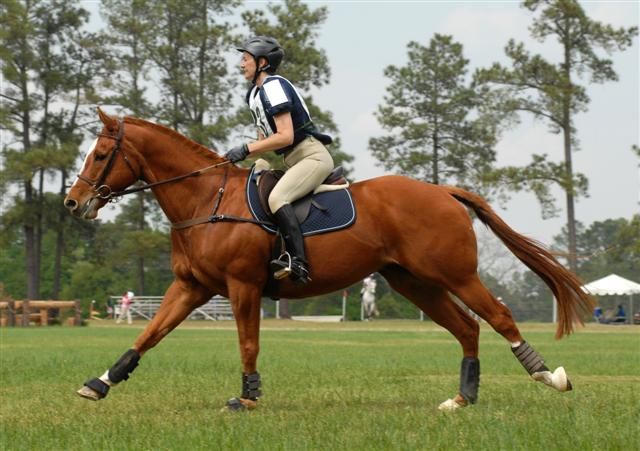 |
| Do. Not. Want. |
Too bad.
Here's another, equally as important tidbit, though: different athletic disciplines make different demands on a horse's body. I know, thank you Captain Obvious, right?
Breaking It Down: The Two Types Of Equine Metabolism
- Aerobic - the muscles use oxygen while generating energy; a slow process
- Anaerobic - yes, you guessed it, genius; the muscles generate energy without oxygen; much speedier
A horse working in a long, steady fashion (think endurance racing or your dressage school) creates energy aerobically. Fat, the horse's go-to fuel, requires oxygen to complete the conversion to horsepower (just like your fireplace must have a flow of oxygen to burn up your firewood & create heat). He has an advantage: this is a much easier & longer-lasting method of energy production.
However, if Dobbin has to work hard & fast (think sprinting or jumping), he cannot get oxygen into his body & burn fat fast enough to meet his increased energy demands. So his muscles turn to glycogen stores (a carbohydrate stored in the liver & muscles that the body can convert to glucose [muscle fuel]), which can be burned anaerobically.
Life Is Full Of Trade-offs
To complicate matters, glycogen is a finite resource & stores are much smaller than his fat supply. Burning it also produces lactic acid, which fatigues muscles. So, you, as pilot, want to save those precious reserves until you really really need it. Save that hard sprint or gallop for your horse trial or other vital moment. And once burned, you MUST to take time to replenish the storehouse before you ask again.
 |
| ALL TEH SCIENCE!! |
Is your brain fried by science-geekness yet? I could go into ATP & muscle cell pH, so be grateful...
Why Should We Care About All This?
Knowledge is ALWAYS power when it comes to horse management. If I understand what my horse's body needs to do his job & how it uses what I give him, I am better able to meet those needs & maximize his performance safely.
In addition, understanding all of that helps to understand this, the point of action: the more fit your horse is, the better he is able to utilize his fat stores first. The unfit horse may have to get up to 40% of his energy from his glycogen reserves during even light exercise. With conditioning, he can drop that percentage dramatically even during moderate exercise, giving you both more time under saddle & reducing the chances of equine metabolic distress.
So What's The Plan?
Do we then stuff our horses full of lard? How do we refill his glycogen tanks? Those answers are up next, along with a brand new addition to the series: why choosy 'moms' choose...uh...their feed very carefully.









The nutrition miniseries is the best!
ReplyDeleteThanks, LW!! I find the stuff fascinating! :) And there is always more to learn, if only my retinas weren't already burned out from the work PC, heh.
ReplyDeleteThis is great!
ReplyDeleteGlad you enjoy it, Madeline! Science is so fascinating -- and useful!!
ReplyDelete